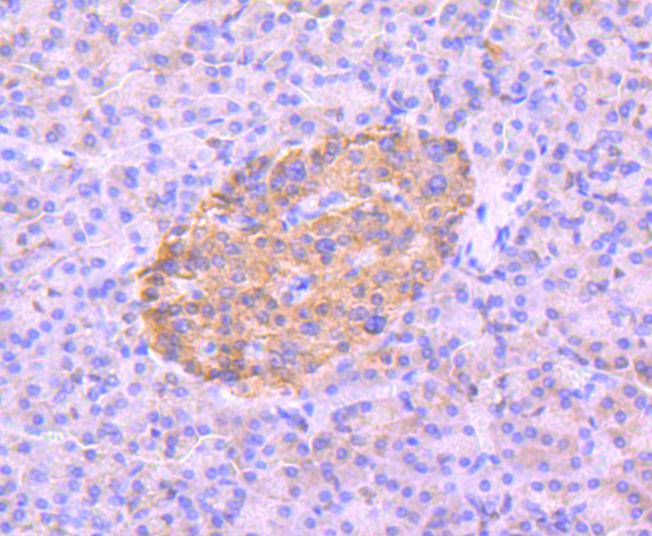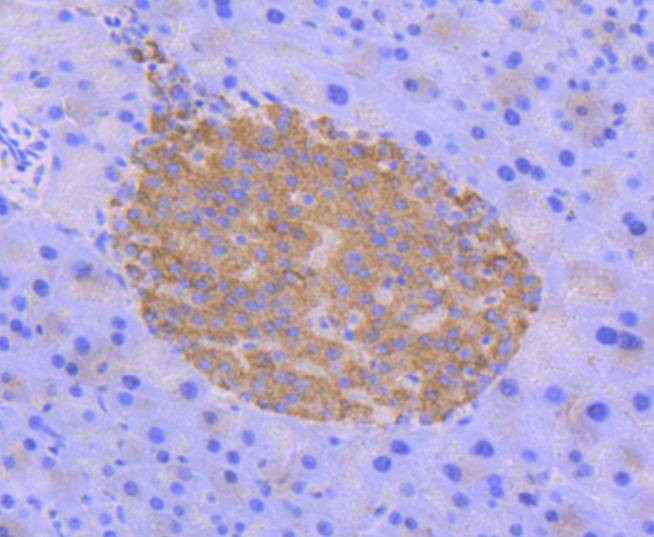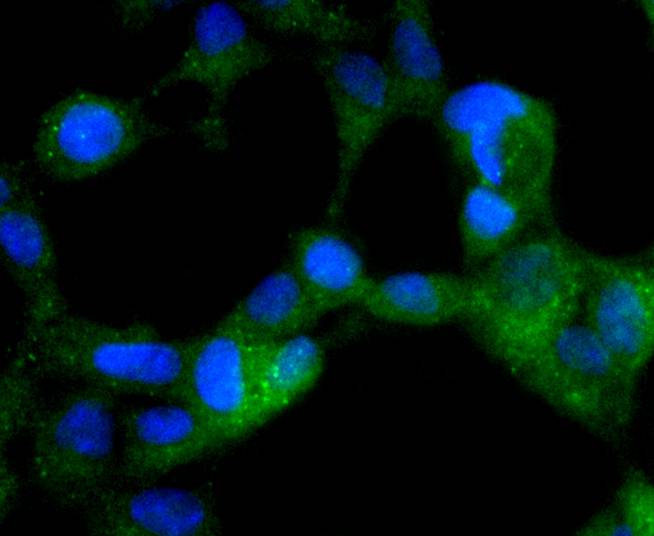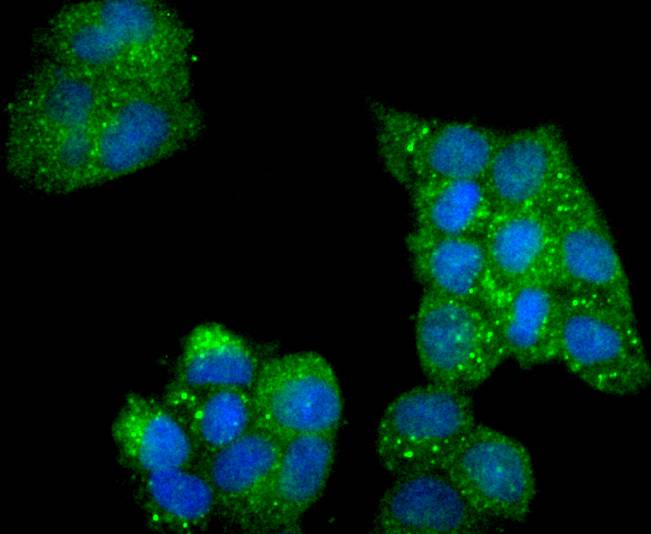Five-prime-AMP-activated protein kinase, known as AMPK, is a heterotrimeric complex that comprises of a catalytic α subunit, and regulatory β and γ. AMPK protects cells from stresses that cause ATP depletion by switching off ATP-consuming biosynthetic pathways. AMPK is activated by high AMP and low ATP via a mechanism involving allosteric regulation, promotion of phosphorylation by an upstream protein kinase known as AMPK kinase (AMPKK), and inhibition of dephosphorylation. Activated AMPK can phosphorylate and regulate in vivo hydroxymethylglutaryl-CoA reductase and acetyl-CoA carboxylase, which are key regulatory enzymes of sterol synthesis and fatty acid synthesis, respectively. The human AMPKα1 gene maps to chromosome 5p12 and encodes a 548 amino acid protein. The major regulatory site phosphorylated by AMPKK on AMPKα has been identified as Thr 172 within the activation loop between the DFG and APE motifs of the alpha-subunits.




